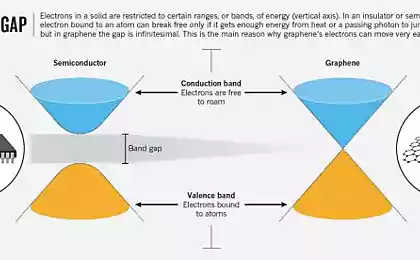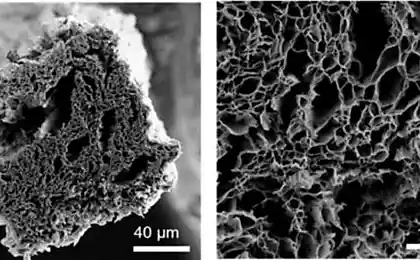709
In graphene - the stars: from graphene oxide material is moving under the influence of light

Graphene sponge i>
New unexpected property of graphene было Chinese scientists found of Nankai University. Experimenting with "graphene sponge" obtained from graphene oxide, they found that the laser beam method to give a tangible acceleration of the sponge.
Графеновую sponge scientists got crumpled sheets of graphene oxide. They tried to cut the material with laser cutter, and suddenly found that under the influence of the laser beam starts to move material. Being placed in a vacuum chamber, small pieces of graphene sponge to throw the laser turned up to a height of 40 cm. They were forced to move even the sun's rays are focused by means of a conventional lens.
It is not entirely clear how the laser (light and all) budge something significantly larger than individual atoms. Perhaps there is an effect of solar sails, when the photons to accelerate the sail, passing its momentum. Recently was launched LightSail - first commercial satellite operating on this principle.
The second idea, which arose from the experimenters was that under the influence of the laser of the carbon atoms are knocked out of graphene, which give the sponge jet propulsion - but this idea scientists, on reflection, have dropped.
According to another hypothesis, graphene absorbs light energy and accumulates because of the electron charge. When the accumulated charge exceeds the capacity of the material, the "extra" electrons "fired" out and give impetus to the sponge. This hypothesis was partially confirmed when the experimenters recorded the talk coming from a piece of sponge. It is unclear just why the electrons do not scatter in random directions, and fly organized in one direction.
If it turns out that on the basis of this phenomenon can be constructed, for example, the engine for the spacecraft in the space flight we can expect a breakthrough. It will mean the creation of a ship that can move without fuel, and the efficiency of the propulsion unit on graphene, according to preliminary calculations, by several orders higher than the efficiency of solar sails.
Source: geektimes.ru/post/251394/























